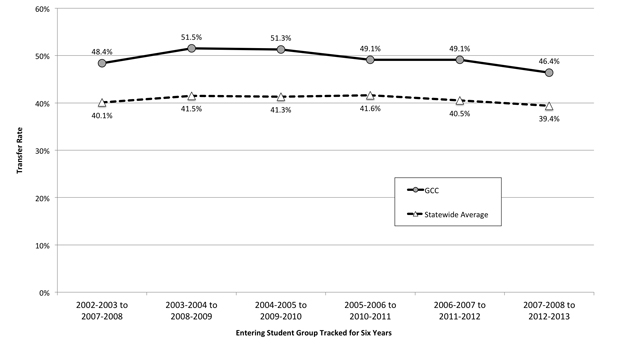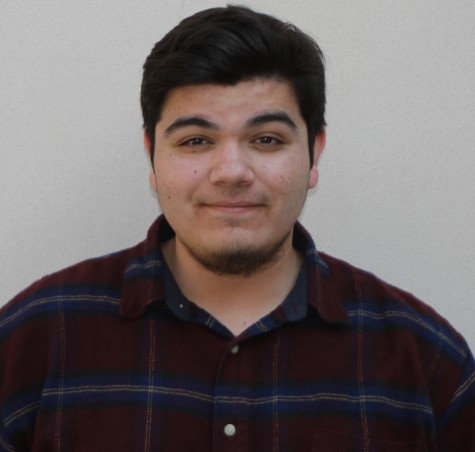With budget cuts in the community college system, it has become problematic for students to transfer to the university system within the expected two years, thus resulting in a decline in transfer rates at GCC in recent years. With classes nearly always full, it’s hard to get the required courses that are transferable.
According to Ed Karpp, dean of research, planning and grants, each year GCC transfers around 300 students to UC, 700 students to CSU, about 300 students to California private universities, and about 100 students to out of state institutions. Glendale College has transfer agreements with USC, Loyola Marymount University, Pepperdine and Occidental College to ensure students are on the correct path to transfer to their desired school.
In the current academic year, enrollment has dropped. Although it’s hard to know all the causes, one factor is probably the economic recovery.
“Some people who would have taken college courses during the recession probably have jobs now and are not taking college courses,” Karpp said.
According to Kevin Meza, transfer center coordinator, one major cause for the transfer rate decline would be the education budget cuts that directly impact a student’s education. These cuts lead to fewer classes offered, fewer spots at the university level and natural changes of society.
According to Karpp, Glendale College has managed to maintain the transfer rate to the University of California at about 4 to 5 percent. In the 2012-2013 school year, GCC transferred a total of 1,244 students to four-year universities.
In 2010, there was a drastic change in the CSU policy, allowing applicants to transfer in the fall semester only, consequently leading to a huge decline in transfer rates. Between 2008-2009 and 2009-2010, the total number of transfers from community colleges to CSU institutions decreased by 25 percent. In 2008, there were 1,029 students that transferred and in 2009, the number dropped to 809.
Transfer rates are not only important to the school’s reputation, but are vital to students trying to pursue higher education. Many students decide on what community college to enroll in based on the rates of transfers, since community colleges are designed for transfer to the university system. Therefore, the higher the transfer rates become, the more enrollment GCC will encounter.
Meza said he advises around 30 students each day.
“Students who visit us, usually get into more selective schools, because they are more aware of the services offered to them and take advantage of them,” said Meza.
In 2006, the transfer rate to UC institutions was 5.5 percent and in the 2012-2013 year, the rate was a 4.0 percent. It has been dropping by 0.2 percent each year. Karpp suggested that the decline in UC transfers may be caused by tuitions increasing. Students may choose to attend CSU’s for a less expensive education.
However, when compared to other schools in the Los Angeles area with similar enrollment numbers, GCC is ranked second out of 10 community colleges. The statewide transfer rate for these colleges with similar enrollment numbers is 40.6 percent and Glendale marks a 48.9 percent for a seven-year span, putting it higher than the state’s average.
Karpp said that winter and summer classes have increased the enrollment numbers. Many students would prefer to attend a school that offers intersession courses because it allows students to take advantage and transfer more quickly, in comparison to going to a community college that only offers spring and fall sessions. This puts GCC near the top and increases the enrollment standing.
Student athletes are usually driven to transfer quickly to pursue their careers in sports. There are approximately 350 student athletes and 16 sports teams at GCC, according to John Aque, GCC’s Sport Academic Counselor. These students have to juggle a lot at once, because they take all of their classes before noon and practice every day in the afternoon.
Aque is in charge of making sure student athletes take all the classes required to transfer within two years because a student can only play at the community college level for two seasons. The transfer rate for student athletes is 39.4 percent.


